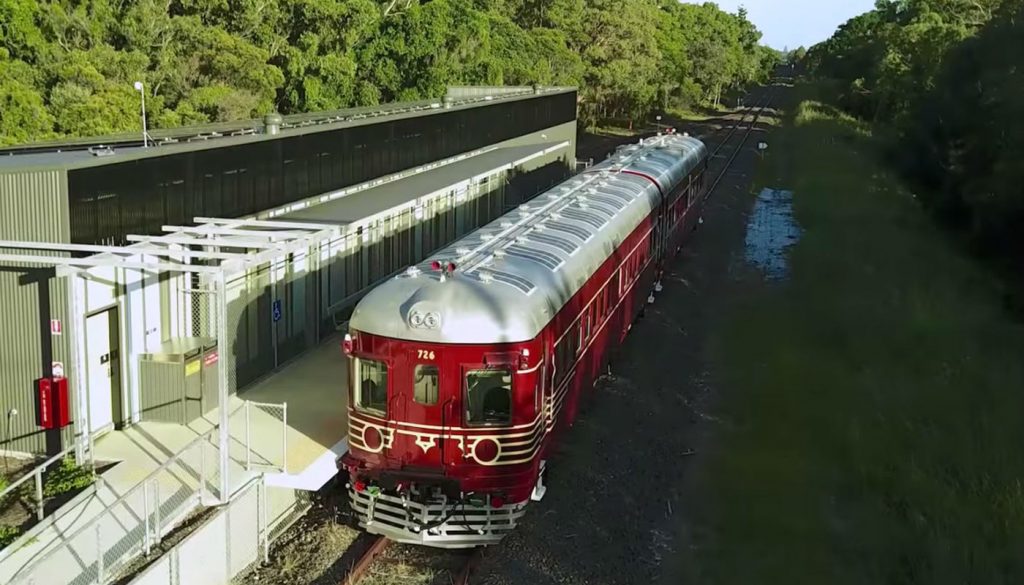The only thing worse than sand in your swimmers is getting stuck in traffic on the way to the beach. We can’t do much about the former (yet), but Byron Bay has taken steps to solve the latter by refurbishing a “red rattler” train to run completely on solar power.
In what is thought to be the first fully solar-powered electric train route in the world, a former coal-mining magnate has upgraded a disused railway line and given new life to a vintage train by kitting it out with solar panels.
Project funder Bill Flannery, who owns the Elements Resort that will be serviced by the solar train route, partnered with Nickel Energy and zero emissions racing company Elmofo, as well as volunteers from Lithgow Railway Workshop, to bring the train into operation.
“We searched the country and found a dilapidated vintage train, restored it, and are now powering it with a 4.6 billion year old power source,” said Jeremy Holmes, development director at Byron Bay Railroad Company, the not-for-profit that manages the service.
In late December 2017, the train made its first 6 km round trip between the town and popular destination North Beach. It is now operating a privately run hourly service that can ferry up to 100 people at a time, plus their surfboards and luggage.
Holmes said the train was able to make between 12 and 15 trips on one full charge.
“The large solar array on the platform roof coupled with the custom curved solar panels on the train roof produce more solar energy per day than is required to operate an hourly return service,” he said.
On its roof, the train boasts 6 kW of custom-made flexible solar panels. They are backed up by 77 kWh of battery storage, which has taken the place of one of the train’s two original diesel engines. According to reneweconomy.com, each one-way trip will use 4 kWh.
The train can recharge while stopped at the stations, which are also equipped with solar panels. When the sun isn’t shining, the train draws clean power from the grid. The remaining diesel engine is the emergency backup.
While building the world’s first solar train is an impressive achievement, there are currently no plans to extend the service further, mostly due to the prohibitive costs of restoring the tracks. Flannery said it would cost about $150 million to upgrade the line through to Murwillumbah, which is 50 km away.
However, Flannery still believes that solar is the future of rail, and has stated that inner-city trams and would make excellent candidates for this technology as well. He funded the Byron Bay solar train project with no government assistance, and has earned praise from industry and inspired hope that more projects will follow this one.
“True innovation meets roadblock upon roadblock, so we congratulate this team on their incredible achievement. Hopefully this one train in regional Australia can demonstrate the possibilities of solar technology and the power of perseverance,” said John Grimes, CEO of the Smart Energy Council.
Holmes concurs, and credits engineering innovation with making the project a success.
“Our service provides an example of how a niche operation, with the involvement of some very clever engineers, can harness the sun’s energy for sustainable transport solutions,” he said.

